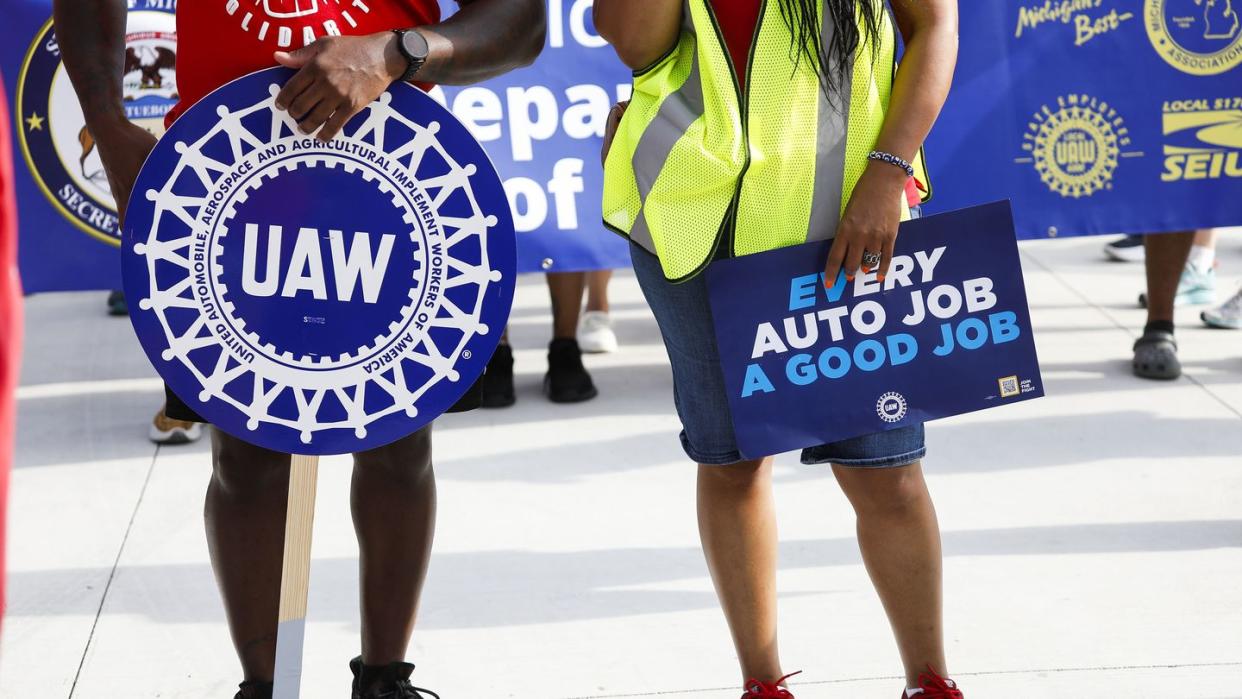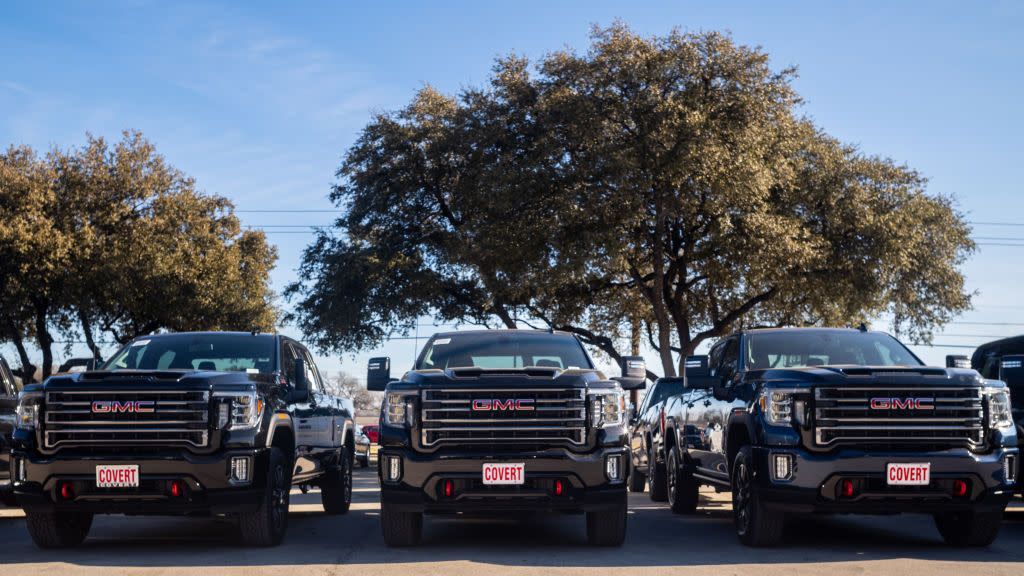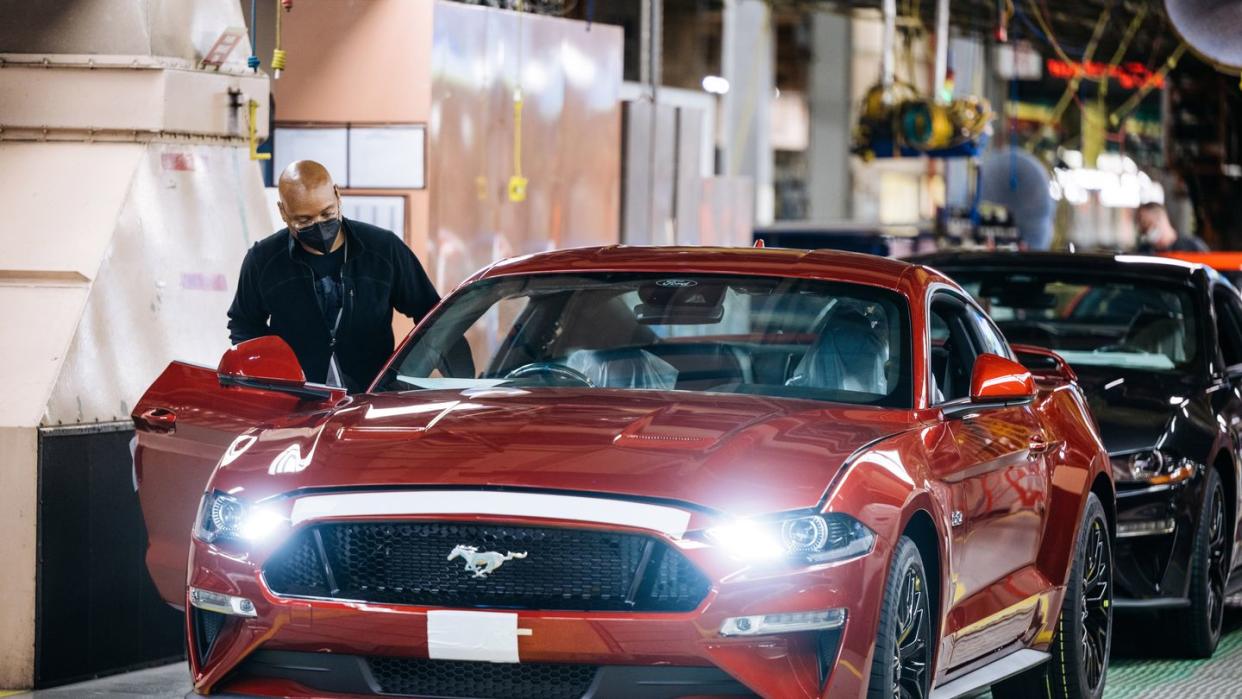What a UAW Strike Could Mean for Your Ability to Find a Car to Buy

The United Auto Workers union is poised to go on strike against Ford, General Motors, and Stellantis—the traditional “Big Three”—later this week.
The strike deadline is 11:59 p.m. ET on Thursday, September 14.
The first impact on consumers could be an end to incentives, with inventory shortages and rising used-car prices following soon after.
It’s been four years almost to the day since the last United Auto Workers strike, when nearly 50,000 General Motors workers walked out for a period of six weeks. Today another impasse is looming, one that’s shaping up to be broader in scope and lengthier in duration.
The UAW’s current contract with Ford, General Motors, and Stellantis expires on September 14. The UAW has demanded numerous changes, including a 40-plus-percent wage hike over the next four years and a shortened, 32-hour work week. Ford, GM, and Stellantis have made counteroffers, but in an online broadcast, UAW president Shawn Fain characterized all three as literal garbage.
“There is almost a certainty that a strike will occur at this point,” Ambrose Conroy said. He’s an auto supply chain expert and founder of Seraph Consulting. “The big questions are which OEMs will be impacted, and will it be a limited tactical strike to extend the UAW strike fund.”

Conroy says that the UAW’s $825 million strike fund could last approximately 90 days. However, if the UAW takes the “tactical” approach, only closing key factories like those that build engines and transmissions, a strike could extend far longer.
This potential action comes at a time when manufacturers are just beginning to get momentum around dealer inventory and production. Though some supply-chain issues linger, used-car prices are returning to normal and new-car incentives have begun to reappear.
“With increased inventory we are seeing the increase in incentives: 5.2 percent of MSRP in August,” says Alex Yurchenko, senior vice president and chief data science officer at industry analyst Black Book, which focuses its research heavily on used-car prices. “It is still way below pre-pandemic levels (about 10.5 percent of MSRP) but much higher than last year (about 2.5 percent of MSRP).”
According to Cox Automotive’s most recent new-vehicle inventory findings, the average supply of new, unsold vehicles in dealer inventory currently sits at 58 days. That’s 46 percent higher than a year ago.
How Are Automakers Preparing?
Stellantis and Ford declined to provide any context around dealer inventories and whether they’ve been actively stocking up to fend off the risk of a strike. However, GM’s director of finance and sales communications, David Caldwell, called GM’s U.S. inventory “consistent,” only up about 4 percent compared to the first quarter.
Regarding the Cox data, Caldwell said: “That comparison industry-wide is off an historically low level, based on the supply-chain disruptions in recent years. This year, those conditions are improved, meaning higher production and better availability for customers compared to the past couple of years.”

While current inventory levels may temper a strike’s impact on new-vehicle sales, parts shortages could be more pressing. An August Detroit Free Press report indicates that Ford hopes to staff its parts depots with salaried workers, plans put in motion as early as July.
Efforts like this could help keep more current cars on the road, but this move in particular wasn’t well received by the UAW.
“I saw reports of Ford taking out big loans and prepping scabs to work if we go on strike,” UAW’s Shawn Fain said on Friday. “They’re getting ready. So we’re getting ready.”
What Will Happen to Incentives?
The UAW declined to comment on the likelihood of a strike or indeed whether it would be broad or targeted. Regardless, Seraph’s Ambrose Conroy believes the impacts to buyers could be near-immediate.
“Incentives will disappear very soon after a strike is called, so consumers looking for a deal should buy now. Choices will become limited as automakers will again focus production on the highest-profit vehicles they can make, and the on-hand inventory will likely sell quickly,” he said.
When that runs dry, shortages will again impact the rest of the market. “A strike that lasts beyond 30 days will likely drive used-car prices higher,” Conroy said. In other words: If a strike runs long, get ready for secondhand price insanity all over again.
You Might Also Like
